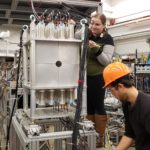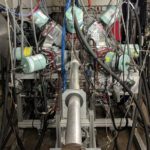My research focus is on the nuclear physics required to understand the mechanisms responsible for production of heavy nuclei in explosive stellar environments. The main part of the experimental efforts is to directly measure the cross sections for nuclear reactions that are key for the stellar p-process. However, since only a fraction of all the required reactions is experimentally accessible, tools that can predict the required cross sections are necessary. One such tool, statistical models, require information about the nuclear properties, such as level densities and gamma-strength functions to calculate the reaction cross sections. These nuclear properties are modeled with large uncertainties that propagate to the resulting cross sections. To reduce these uncertainties, I utilize the Oslo method to extract the statistical nuclear properties from experimental data. Finally, I use the cross sections obtained from the above methods to investigate the impact of the new reaction cross sections on the abundances of the nuclei produced by the p-process.
Follow the links below to learn more about the research efforts of my group:



